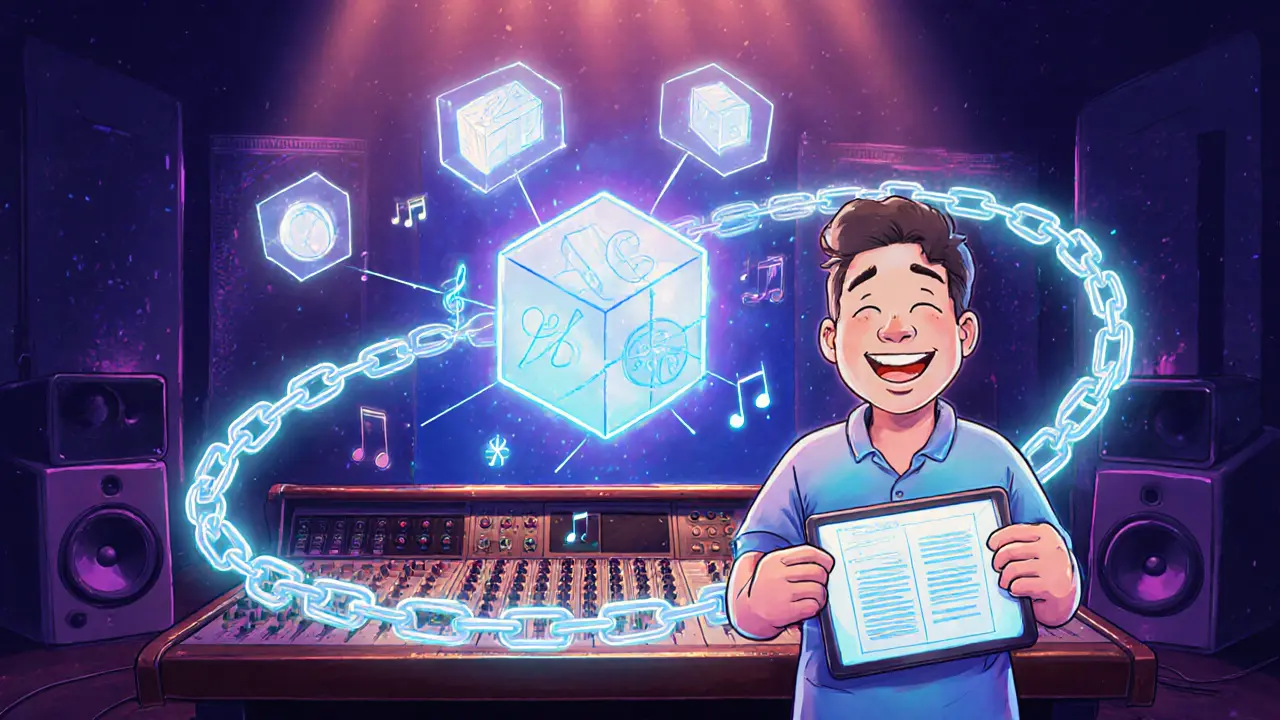Explore how blockchain reshapes music rights, from smart contracts and instant royalties to NFTs, while covering real‑world pilots, challenges, and future trends.
Music Royalties on the Blockchain
When talking about music royalties, the ongoing payments creators receive each time their songs are streamed, performed, or licensed. Also known as royalty payments, they have traditionally relied on complex contracts and middlemen. Today, blockchain, a decentralized ledger that records transactions in an immutable way and smart contracts, self‑executing code that runs when predefined conditions are met are reshaping how those payouts are calculated and delivered. By tokenization, the process of converting rights or assets into digital tokens, a creator can turn future royalty streams into tradable, transparent assets that anyone can verify.
Why Blockchain Matters for Royalty Payments
Blockchain enables immutable tracking of every play, sync, or broadcast event, which directly ties into the concept of music royalties. This creates a clear subject‑predicate‑object chain: music royalties are recorded on blockchain, blockchain provides transparent audit trails, and transparent audit trails boost trust among artists, labels, and fans. The technical guide on blockchain immutability explains how cryptographic hashing and consensus mechanisms prevent tampering—exactly the safeguard royalty owners need. Moreover, decentralized exchanges (DEXs) and centralized platforms reviewed on SOHO19, such as the Bitpanda Broker review, show how liquidity and fee structures affect tokenized royalty assets, giving creators a clear picture of where to list their royalty tokens.
Smart contracts require precise conditions: a play count reaches a threshold, the contract releases a payout automatically. This eliminates delayed payments and reduces administrative overhead. The ZKSwap V3 airdrop article illustrates how token distribution can be automated without manual intervention, a model that royalty platforms can adopt for fair, instant payouts. Meanwhile, DeFi concepts like single‑sided vs. dual‑sided liquidity provide insight into how royalty tokens can be paired with stablecoins or other assets to attract investors while minimizing impermanent loss.
Tokenization also opens doors to new financial products. For instance, a creator could issue a royalty-backed token, list it on a DEX like Meteora DAMM v2, and let fans trade future earnings for immediate cash. The review of dynamic fee models helps creators understand how to price these tokens without draining returns. Additionally, on‑chain metrics from market analysis posts give real‑time data on token performance, allowing artists to adjust strategies on the fly.
All these pieces—blockchain’s immutability, smart contract automation, tokenized assets, and DeFi liquidity tools—form an ecosystem that makes royalty payouts faster, more transparent, and more accessible. Below you’ll find a curated collection of deep‑dive guides, exchange reviews, and practical how‑tos that walk you through every step, from setting up a royalty token to navigating airdrop calendars and evaluating fee structures. Dive in to see how the crypto world is finally giving music creators the payment fairness they’ve been waiting for.

